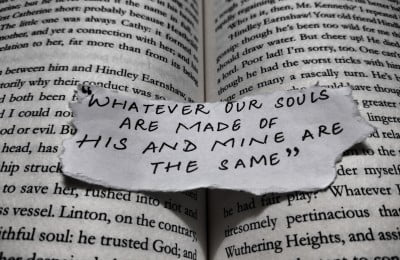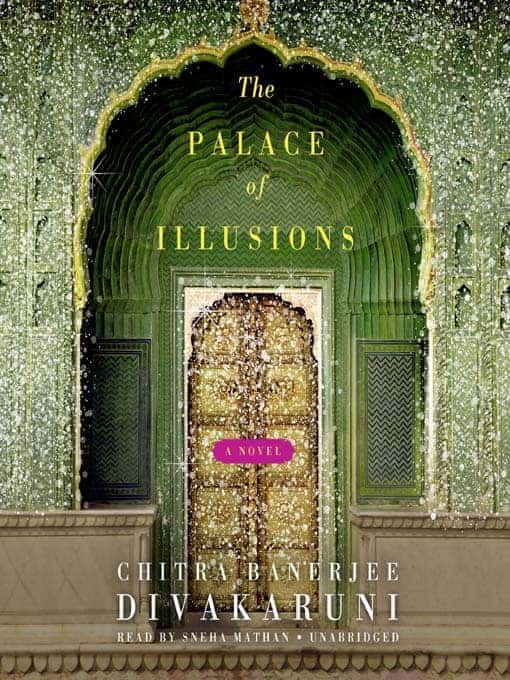Tired of romantic clichés? Want to savour jealousy, vengefulness, passion, and imagination? If your answer to these questions is- yes! Then Wuthering Heights is your one stop book destination. We bet it has more plot twists than your college life.
1.Humans are complex
Wuthering Heights has a theme that resonates time and again, screaming through the pages and chapters, warning the readers about the superficial extent of knowledge about a person that can have lethal consequences.
Be it Mr. Lockwood’s perception about Heathcliff, or Heathcliff’s love for Isabella or Linton’s blooming feelings for Catherine. It is a tricky business! Remember when Lockwood said, “He’ll love and hate equally under cover?” Lockwood must be dreading his own words in Chapter 33.
Didn’t you clench your heart when young Catherine was called by her uncle in the most hospitable manner ever? She thought of Heathcliff as a kind gentleman, but readers knew much more. Emily Brontë did not only want to get her readers to the edge of their seats but also had a lesson to teach. Humans can be complex, their psychological realms can resemble a spider’s web, so don’t be that fly!.
2.Man is a result of his situations- maybe (not)?
You’re lying if you couldn’t help but think how different Edgar Linton and Hindley Earnshaw were! Two loving husbands, death parting them from their wives. The difference- one turns to drinking, the other turns to his daughter. While Hindley turns to a lunatic, finding refuge in alcoholism, Edgar turns out as a loving father. The difference percolates through the generations and leaves imprints on the union of their children. (did we spill all the beans?)
“I used to draw a comparision between him and Hindley Earnshaw….They had both been fond husbands, and were both attached to their children; and I could not see how they shouldn’t both have taken the same road, for good or evil…Linton, on the contrary, displayed a true courage of loyal and faithful soul”
Now, one cannot ignore the fact that Hareton Earnshaw and Catherine Linton akin to Heathcliff and Catherine Earnshaw. Heathcliff and Hareton find shelter but fail to find familial love. But there is a difference, Heathcliff’s urge for love resembles tumultuous flames but Hareton’s love resembles rain after petrichor. Hareton amalgamates his wild spirit to his soothing love for Catherine. Heathcliff realizes this perfect balance that Hareton creates and makes Heathcliff realize his mistakes, (maybe) even turning him towards repentance. But one wishes if Hareton could lecture Heathcliff and force him to take down notes.
3. Love is a domestic affair- literally and very literally!
The love between siblings is not the usual hair-pulling and eye-scratching we can relate to! The Earnshaw siblings have a unique attachment which, even compelled Catherine to detach herself from Heathcliff. The Linton siblings have an unbreakable bond as well. Even when Isabella marries Heathcliff, Edgar’s isolation from Isabella is grave, but merely verbal.
“It is out of the question my going to see her, however: we are eternally divided.
There is underlying concern and affection which is evident and highlighted when Edgar brings Linton Heathcliff after Isabella meets her end.
Incest reverberates time and again throughout the novel. Many critics argue that Heathcliff was Catherine’s foster brother and hence “suggests that an unconscious incest taboo impended Heathcliff and Catherine’s expectation of a normal sexual union”
As the plot unfolds, cousins share romantic relationships as Catherine and Linton marry, and later Catherine and Hareton unite. It might make some readers uncomfortable; however, Brontë weaves a story that focuses more on the turmoil of feelings than looking at the family tree.
4. It is not just a love story!
NEVER! NEVER tell a Wuthering Heights enthusiast that the plot is “only about a love story”. You might end up getting physically injured. (not kidding)
Brontë shows how love has other transcending emotions of envy, agony and betrayal. The novel seems to whisper- “How much love is too much love?” Is the failure of a romantic union capable to allow the usage of innocent lives as pawns in the ‘revenge game’? Such questions will make you scratch your head, the worst part- Brontë leaves these questions unanswered.
5. It’s complicated
Catherine and Heathcliff are in love, but Catherine marries Edgar Linton. Heathcliff marries Isabella Linton- his long lost love’s sister-in-law; his wife’s son marries her brother’s daughter; Catherine’s daughter marries her brother’s son. Are beads of perspiration rolling down your forehead already?
Do we still have to tell you to grab a copy of Brontë’s first and only published novel? Get your reading glasses and delve into one of the best gothic novels ever written.
Feature Image Credits: Priyanshi Banerjee for DU Beat
Priyanshi Banerjee






